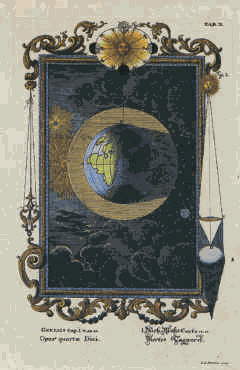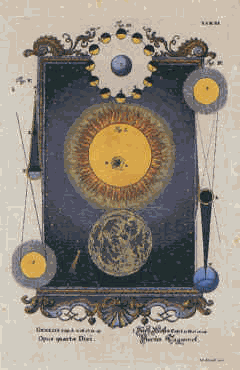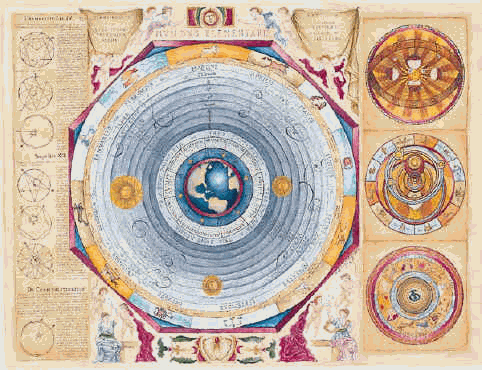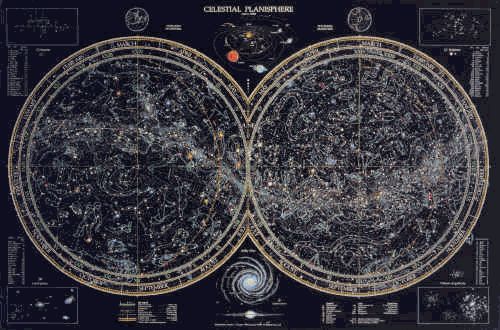 Gregory J. de Montfort’s School of Astrology
Gregory J. de Montfort’s School of Astrology
ABN 16 393 698 642
Opening Doors to the New Millennium


|
Postal Address: |
Email: |
Telephone/Facsimile: +61 2 9754 2999 |
Curriculum 2001
A structured four-level study programme encompassing modern
and traditional astrological concepts.
Correspondence Courses, Workshops, Study and Research Groups.

Flexible Study Timetables - Exacting Tuition
For those who advised and encouraged me in revising this syllabus and curriculum,
you have my humble and sincerest thanks…….
Astrological Education Syllabus & Curriculum
![]() A fully structured, four-level intensive study programme encompassing modern and traditional astrological concepts.
A fully structured, four-level intensive study programme encompassing modern and traditional astrological concepts.
![]() Four graded levels of study are offered from beginner to professional international certification, with additional specialty courses and workshops offered under post-graduate study.
Four graded levels of study are offered from beginner to professional international certification, with additional specialty courses and workshops offered under post-graduate study.
![]() A comprehensive reading list for each level accompanies the student study guides and course text which are supplied with course materials upon registration.
A comprehensive reading list for each level accompanies the student study guides and course text which are supplied with course materials upon registration.
I practise and teach tropical Western astrology from a psychological and humanistic viewpoint, but do not overlook teaching other disciplines and principles of astrology so that the student receives a well rounded knowledge of the history and development of astrology/astronomy, as well as current practices and areas under research or contention. The course is a blend of traditional and modern techniques, as of course astrology must necessarily grow and evolve to reflect the knowledge of the times we are living in, and above all - students are encouraged to think astrologically for themselves rather than learn in "cookbook" fashion.
Each student is at all times be treated as an individual, and the courses may be tailored to individual needs in terms of preference and experience as well as areas that may prove more difficult - additional study and/or assignments may be set in these circumstances as required.
![]() If you have a wish to learn astrology - I will teach you
If you have a wish to learn astrology - I will teach you ![]()
Students are free to ask any questions they wish, and I guarantee prompt response.
Lessons will be undertaken via email and snail mail (for physical documents, books etc, and those without access to the internet) - and for those who do have access to the internet, there will be time given for individualised tuition via this medium. From time to time workshops, meetings and study groups will be undertaken both inside and external to the school, and students are encouraged to actively participate.
Your astrological education under my tutelage is extensive and thorough - these courses are not simple and superficial Sun-Sign astrology, but in depth studies requiring earnest effort, and for those willing to apply themselves, astrology can be a most rewarding field - both in terms of self-understanding, and in our understanding of the drives and motivations of fellow humans cohabiting our tiny planet.
"The true purpose of astrology is after all as a tool of human understanding.
As an unparalleled tool of self-awareness, astrology can help us make our time, --our experience, our lives--deeply transformative.
The expanded view with which astrology empowers us can open doors to a greater appreciation of our own motivations and a greater compassion for the motivations of others. It can also provide the psyche with a framework for realizing its fullest potential while endowing the soul with an understanding of its own evolution as well as an awareness that we are all a part of some inexplicable, enigmatic wholeness, and this realisation can awaken and animate our reverence for the sacred, and bring a sense of enchantment to our lives."
Excerpt from "Humanistic Astrology"
The key to learning astrology is to read as much astrological literature as you can, attend as many astrological meetings as you can, and practical hands on experience in erecting and interpreting as many charts as you can whilst earnestly studying in a fully structured manner.
As I do not teach only one school of astrological thought, I take pride in ensuring that you receive a broad and thorough grounding in your studies.
Students have the option - depending upon their individual requirements in terms of personal goals - of which astrological body they will sit their astrological examinations for accreditation - I will thoroughly prepare you for your choice, and assist in providing you with the necessary information to make that informed choice.
The four courses comprising the necessary grounding for practise as an astrologer follow:-
|
Level I -"Foundation" |
|
Level II - "Certificate Level"- At Level II, natal delineation is reviewed and minor aspects, lunar phases, derived houses and fixed stars are added to broaden interpretation. The dynamic elements of astrology (which include transits, progressions, etc.) are also introduced at this level. Calculations include relocation charts, transits, progressions, solar arc directions, declinations, the Vertex, the Equatorial Ascendant, and antiscia (solstice points). Acquaintance with mundane charting such as ingress charts is required at this level, but is covered more fully in Level III. |
|
Level III - "Practitioner Certificate "- natal and basic trends forecasting is covered enabling the student to gain valuable practical hand's on experience.Certificate of Competency upon completion Level III introduces the 360° and the 90° dials for more precision and covers the subjects of horary and electional astrology, synastry, solar and lunar returns, rectification and the history of astrology. |
|
Level IV - "Diploma" Professional Diploma upon passing - this is the qualifying course for entering astrological practise. Level IV brings together the information learned at the other levels and adds rectification (which incorporates many techniques). Once rectification is passed, the student may specialise in consulting, technical research or general research. |
|
The following courses are ancillary to the Diploma and are recommended for those intending to further their studies of astrology |
|
Level V - "Teacher/Tutor Certificate" The requirement here is that the applicant should have held the Diploma for at least 3 years, with at least 1 year experience in the field overseen by a qualified tutor. Contact me for details. |
|
Level VI - "Masters" It is expected in the near future to introduce a Masters in Astrology programme to incorporate the development and submission of a thesis in original astrological research and/or technique |
|
Specialist Workshops, Study Groups and Research Groups |

This education programme follows international guidelines as set forth by
the National Council for Geocosmic Research in the United States, and the subject matter encompasses all schools of astrological thought, thus it is designed to provide the student with necessary foundation and structure to their astrological studies in order to raise the standards of the field for both students and teachers.
Correspondence courses can be started at any time.
Study Timetables for the courses are flexible, but application, self-discipline and effort as well as completion of assignments is necessary. There will be ample opportunity for online discussion groups and individual tuition via the internet.
You can progress through the course as fast as you are able to digest and assimilate the lessons, and of course you must satisfactorily complete the assignments - the succeeding lesson and assignment will be sent to you upon receipt of your current lesson and assignment for marking.
The assignments will form the assessment part of your final marks.
As with any serious undertaking, you will need to set aside time to study and complete your assignments, so a personal timetable is recommended. I will assist you in creating one should you need.
As a guide, the following should provide enough time to fit your studies in with your lifestyle. At least 2 hours per day should be set aside in most instances.
LEVEL 1 - FOUNDATION COURSE: Estimated time for completion: up to 12 months
LEVEL 2 - CERTIFICATE COURSE: Time for completion up to 12 months
LEVEL 3 - PRACTITIONER CERTIFICATE COURSE: Time for completion up to 18 months
LEVEL 4 - DIPLOMA COURSE: Time to completion up to 20 months.
![]() Students of the school can purchase astrology text books through the school at pre-arranged discounts from the Adyar Bookshop
Students of the school can purchase astrology text books through the school at pre-arranged discounts from the Adyar Bookshop  and Spica Publications - discounts on astrological software can be obtained again through the school, from Esoteric Technologies and Matrix Software
and Spica Publications - discounts on astrological software can be obtained again through the school, from Esoteric Technologies and Matrix Software

LEVEL I - Foundation
- Prepares the student to erect and interpret a natal chart![]() Introduction to the Modern situation and astrological schools of thought
Introduction to the Modern situation and astrological schools of thought
![]() Origins of astrology - the Moon schools and the Sun schools
Origins of astrology - the Moon schools and the Sun schools
![]() Basic Ethics in using astrology
Basic Ethics in using astrology
![]() What can astrology be used for?
What can astrology be used for?
![]() Basic Astrological Concepts -the Seasons and the view from Earth
Basic Astrological Concepts -the Seasons and the view from Earth
![]() The Planets and their Principles - The astrology and astronomy of the planets and other bodies in our solar system
The Planets and their Principles - The astrology and astronomy of the planets and other bodies in our solar system
![]() Apparent motion and retrograde motion - cyclic dynamics of and its implications
Apparent motion and retrograde motion - cyclic dynamics of and its implications
![]() Basic astronomy of the celestial sphere.- Geocentricity, The Great Circles -Ecliptic, Prime Vertical, Equator and horizon, Prime Meridian, the Planetary Nodes
Basic astronomy of the celestial sphere.- Geocentricity, The Great Circles -Ecliptic, Prime Vertical, Equator and horizon, Prime Meridian, the Planetary Nodes
![]() The Basic Structure of the Astrological Wheel of Life - The Horoscope
The Basic Structure of the Astrological Wheel of Life - The Horoscope
The Circle and its astrological divisions and symbolism
![]() Main chart points - Ascendant/Descendant, Midheaven/Imum Coeli, Vetex/Anti-Vertex, East Point
Main chart points - Ascendant/Descendant, Midheaven/Imum Coeli, Vetex/Anti-Vertex, East Point
![]() Further Basic astronomy - Zodiacal longitude, Celestial Latitude, Declination, Right Ascension, Azimuth, Altitude
Further Basic astronomy - Zodiacal longitude, Celestial Latitude, Declination, Right Ascension, Azimuth, Altitude
![]() The Houses
The Houses
![]() What the houses represent - Angularity: Angular, Succedent, and Cadent Houses
What the houses represent - Angularity: Angular, Succedent, and Cadent Houses
![]() Understanding the methods of House Division - house systems and variations, choice of house system
Understanding the methods of House Division - house systems and variations, choice of house system
![]() House cusps - defined and the planets that rule them
House cusps - defined and the planets that rule them
![]() Quadrants of the chart - the humanistic cyclic symbolism
Quadrants of the chart - the humanistic cyclic symbolism
![]() The Zodiacal Signs
The Zodiacal Signs
![]() The Constellations - The Sidereal and Tropical Zodiac defined
The Constellations - The Sidereal and Tropical Zodiac defined
![]() Sign attributes
Sign attributes
![]() Divisions of the Signs - Dwads and Decantes / Faces and Terms
Divisions of the Signs - Dwads and Decantes / Faces and Terms
![]() Rulerships - how they affect signs - dual planetary rulerships
Rulerships - how they affect signs - dual planetary rulerships
![]() Mode I - The Triplicities - the elements
Mode I - The Triplicities - the elements
![]() Mode II - The Quadruplicities - initiative, persistence and fluctuation
Mode II - The Quadruplicities - initiative, persistence and fluctuation
![]() Polarity - Hermetic origins and modern application are they masculine/feminine, negative/positive or active/receptive?
Polarity - Hermetic origins and modern application are they masculine/feminine, negative/positive or active/receptive?
![]() Location and Hermetic correspondences
Location and Hermetic correspondences
![]() Symbolism of Planets and Signs and possible interpretive meanings for planetary positions in Signs and House
Symbolism of Planets and Signs and possible interpretive meanings for planetary positions in Signs and House
![]() Computation
Computation
![]() Explanation of the calendar systems and limitations of computer programmes.
Explanation of the calendar systems and limitations of computer programmes.
![]() An explanation of Time -
An explanation of Time -
![]() Further astronomy of the axial rotation of the Earth and the astrological implication/application
Further astronomy of the axial rotation of the Earth and the astrological implication/application
![]() Explanation of the Ephemeris, Table of Houses, Logarithms and International Atlas.
Explanation of the Ephemeris, Table of Houses, Logarithms and International Atlas.
![]() The Equation of Time, Greenwich Mean Time, Local Mean Time, Calculation of Local Sidereal Time, Acceleration of the Interval of Time, and Conversions of Longitude to Time
The Equation of Time, Greenwich Mean Time, Local Mean Time, Calculation of Local Sidereal Time, Acceleration of the Interval of Time, and Conversions of Longitude to Time
![]() Calculation of the Zodiacal Longitude of the Planets for a given Time
Calculation of the Zodiacal Longitude of the Planets for a given Time
![]() Calculation of the Degree Ascending and the Degree Culminating for a given Time - interpolation of the remaining house cusps
Calculation of the Degree Ascending and the Degree Culminating for a given Time - interpolation of the remaining house cusps
![]() Aspects - energy connections that can reveal themes in the chart.
Aspects - energy connections that can reveal themes in the chart.
Descriptions and use attributed to aspects
Interpretive Meanings and introduction into current research into the lesser used aspects
![]() Outline of Chart interpretation-
Outline of Chart interpretation-
Beginning interpretation - putting it all together to take it apart.
Preponderance and deficits - by quadruplicity, triplicity, polarity, aspects
Chart Patterns and Configurations - detailed delineation of the chart potentials - the beginnings of synthesis
The lights and personal planets, The Angles, Aspects to Angles, Dignity/Rulership,
![]() An introduction to Psychological Functions - psychological/humanistic astrological deduction and delineation. The Conscious and Unconscious dimensions of Astrology are explored- the main Archetypes defined - Carl G. Jung and his theories - James Hillmann - Dane Rudhyar and Stephen Arroyo's superlative contributions to astropsychological thinking. A brief introduction to the Huber Techniques. The role of "level" in interpretation.
An introduction to Psychological Functions - psychological/humanistic astrological deduction and delineation. The Conscious and Unconscious dimensions of Astrology are explored- the main Archetypes defined - Carl G. Jung and his theories - James Hillmann - Dane Rudhyar and Stephen Arroyo's superlative contributions to astropsychological thinking. A brief introduction to the Huber Techniques. The role of "level" in interpretation.
These concepts are covered more fully in the higher levels of the course
![]() The Outer Planets and Correlating History to the Planetary Cycles - is humanity currently experiencing a modern day Renaissance?
The Outer Planets and Correlating History to the Planetary Cycles - is humanity currently experiencing a modern day Renaissance?
![]() An Introduction to the Mythic Dimensions of Astrology - how myths can help illustrate archetype and behavioural patterns
An Introduction to the Mythic Dimensions of Astrology - how myths can help illustrate archetype and behavioural patterns
LEVEL II - Certificate
- The Student should review the content of Level IReview and Synthesis: Major aspect configurations - Temperament patterns
Understanding at this level progresses beyond key word definitions to synthesis of the interpretation.
![]() Ethics - again the responsibility of being an astrologer is to be stressed - common sense and a positive, constructive approach to counselling
Ethics - again the responsibility of being an astrologer is to be stressed - common sense and a positive, constructive approach to counselling
![]() Further Exploration of the Planets
Further Exploration of the Planets
![]() The significance of the least aspected or unaspected planet in the chart.
The significance of the least aspected or unaspected planet in the chart.
![]() A deeper look at planetary cycles and their correlation to phases of human psychological development
A deeper look at planetary cycles and their correlation to phases of human psychological development
![]() Lunar and Planetary Phases Theory and interpretation
Lunar and Planetary Phases Theory and interpretation
![]() Traditional Techniques
Traditional Techniques
![]() Mutual Reception
Mutual Reception
![]() Dispositor and Final Dispositor
Dispositor and Final Dispositor
![]() The Chart Ruler
The Chart Ruler
![]() Derived House Analysis - using the houses to describe others in relation to the chart owner
Derived House Analysis - using the houses to describe others in relation to the chart owner
![]() Social Planets and Civil life
Social Planets and Civil life
![]() More mythic connections
More mythic connections
![]() Introducing The Asteroids, Chiron and the Centaurs
Introducing The Asteroids, Chiron and the Centaurs
![]() An introduction to the Fixed Stars - history and interpretive keys
An introduction to the Fixed Stars - history and interpretive keys
![]() The 360 Degree and 90 Degree Dials - their history and that of Cosmobiology
The 360 Degree and 90 Degree Dials - their history and that of Cosmobiology
![]() An understanding of the dials, their advantages and disadvantages
An understanding of the dials, their advantages and disadvantages
![]() How mid points are located and their astrological implications
How mid points are located and their astrological implications
![]() Astronomical Data
Astronomical Data
![]() Planetary and Nodal Cycles
Planetary and Nodal Cycles
![]() Antiscia and Solstice points
Antiscia and Solstice points
![]() Mundane Planes (Great circles)
Mundane Planes (Great circles)
![]() Eclipses - the geometry of Solar and Lunar eclipses
Eclipses - the geometry of Solar and Lunar eclipses
![]() The use and meaning of eclipses in astrology -traditional and modern lines of thought
The use and meaning of eclipses in astrology -traditional and modern lines of thought
![]() The Saros and Metonic cycles
The Saros and Metonic cycles
![]() Precession of the Equinoxes
Precession of the Equinoxes
![]() Vertex and Equatorial Ascendant
Vertex and Equatorial Ascendant
![]() Parrallels and Contraparallels - the third dimension of the chart
Parrallels and Contraparallels - the third dimension of the chart
![]() Calculation
Calculation
![]() Revision of Chart erection
Revision of Chart erection
![]() Arabic Parts -- The Part of Fortune [diurnal and nocturnal formulae]
Arabic Parts -- The Part of Fortune [diurnal and nocturnal formulae]
![]() The Vertex and Declinations
The Vertex and Declinations
![]() Calculation of the Nodes of the Moon
Calculation of the Nodes of the Moon
![]() Progression Theory [primary, secondary and tertiary] and the Adjusted Calculation Date
Progression Theory [primary, secondary and tertiary] and the Adjusted Calculation Date
![]() Solar Arc Direction of the chart
Solar Arc Direction of the chart
![]() Transits
Transits
![]() Return Charts
Return Charts
![]() Ingress Charts
Ingress Charts
![]() Midpoints and Midpoint Trees - theory and application
Midpoints and Midpoint Trees - theory and application
![]() A deeper look at aspect harmonics and Configurations - T squares, Grand Trines etc.
A deeper look at aspect harmonics and Configurations - T squares, Grand Trines etc.
![]() Chart patterns & Major Configurations - Bowls and Bundles; Locomotives and Kites; hemispheric and quadrant distribution etc.
Chart patterns & Major Configurations - Bowls and Bundles; Locomotives and Kites; hemispheric and quadrant distribution etc.
![]() Delineation
Delineation
![]() The ability to interpret a combination of two or three planets, taking into account the houses, by placement and rulership, in a constructive and helpful manner
The ability to interpret a combination of two or three planets, taking into account the houses, by placement and rulership, in a constructive and helpful manner
![]() Interpretation of Progressed planets and luminaries as related back to the natal chart
Interpretation of Progressed planets and luminaries as related back to the natal chart
![]() Interpretation of Solar Arc directed planets in relation to the natal chart points and midpoints
Interpretation of Solar Arc directed planets in relation to the natal chart points and midpoints
![]() The use and meaning of transits
The use and meaning of transits
![]() Interception - what is it and what can it indicate?
Interception - what is it and what can it indicate?
![]() Combinations of major configurations; some "Combination" charts - case studies. -The importance of declination in analysis.
Combinations of major configurations; some "Combination" charts - case studies. -The importance of declination in analysis.
![]() More psychological concepts -"Complexes" - a Jungian viewpoint.
More psychological concepts -"Complexes" - a Jungian viewpoint.
![]() Archetypal themes - finding the personal myth or story in the chart.
Archetypal themes - finding the personal myth or story in the chart.
![]() Computer programmes - variety available and their limitations
Computer programmes - variety available and their limitations
![]() Several case studies in chart synthesis. Establishing the level of the client's reality
Several case studies in chart synthesis. Establishing the level of the client's reality
LEVEL III - Practitioner's Certificate
- The Student should review the content of Level I & II![]() A deeper look at the history of astrology in the West
A deeper look at the history of astrology in the West
![]() Mesopotamia, Egypt, Greece and Rome, The Middle Ages [Arabic/The West], The Rennaissance and The Scientific Revolution, The English Tradition to the 21st century
Mesopotamia, Egypt, Greece and Rome, The Middle Ages [Arabic/The West], The Rennaissance and The Scientific Revolution, The English Tradition to the 21st century
![]() Long term Astrological Cycles of planets and planetary combinations and their historical significance
Long term Astrological Cycles of planets and planetary combinations and their historical significance
![]() Astronomy
Astronomy
![]() A deeper look at the astronomy of retrograde and periods
A deeper look at the astronomy of retrograde and periods
![]() Calculation - directing the chart
Calculation - directing the chart
![]() Planetary Returns.
Planetary Returns.
![]() Secondary Progressions.
Secondary Progressions.
![]() Converse and Primary progressions.
Converse and Primary progressions.
![]() Day for a Year Directions.
Day for a Year Directions.
![]() One Degree Interpolation.
One Degree Interpolation.
![]() Solar Arc Direction.
Solar Arc Direction.
![]() Solar Return.
Solar Return.
![]() Progressed Moon and phases
Progressed Moon and phases
![]() Delineation
Delineation
![]() Essential dignities, Traditional rulerships, Almuten of the chart.
Essential dignities, Traditional rulerships, Almuten of the chart.
![]() Final chart signatures, Shadow signatures.
Final chart signatures, Shadow signatures.
![]() Retrograde planets in the chart.
Retrograde planets in the chart.
![]() Thesis - Antithesis - Synthesis - psychology of the three phases of the retrograde cycle.
Thesis - Antithesis - Synthesis - psychology of the three phases of the retrograde cycle.
![]() Retrograde personal planets in aspect to retrograde transpersonal planets.
Retrograde personal planets in aspect to retrograde transpersonal planets.
![]() Specific retrograde planets study.
Specific retrograde planets study.
![]() Mundane Astrology
Mundane Astrology
![]() Mundane astrology defined
Mundane astrology defined
![]() Fields of Mundane Astrology - Political Astrology, Astro-Geology and Topology, Historical Astrology, Astro-Archaeology, Astro-Meteorology, Astro-Seismology, Astro-Economics
Fields of Mundane Astrology - Political Astrology, Astro-Geology and Topology, Historical Astrology, Astro-Archaeology, Astro-Meteorology, Astro-Seismology, Astro-Economics
![]() Horary Astrology
Horary Astrology
![]() Horary astrology defined
Horary astrology defined
![]() Strictures, aphorisms and rules
Strictures, aphorisms and rules
![]() Aspects considered and their meanings in Horary
Aspects considered and their meanings in Horary
![]() The special use of derived houses in Horary astrology
The special use of derived houses in Horary astrology
![]() More astrological notation - Beseigement, Impedition or refranation, Translation of Light, Peregrine planets
More astrological notation - Beseigement, Impedition or refranation, Translation of Light, Peregrine planets
![]() The use of dignities, retrogrades, The Fixed Stars , The Nodes, Lunations and Eclipses in Horary astrology
The use of dignities, retrogrades, The Fixed Stars , The Nodes, Lunations and Eclipses in Horary astrology
![]() Electional Astrology
Electional Astrology
![]() Electional astrology defined
Electional astrology defined
![]() Traditional Rules - significators and afflictions
Traditional Rules - significators and afflictions
![]() Radical Elections
Radical Elections
![]() Mundane Elections
Mundane Elections
![]() Ephemeral Elections
Ephemeral Elections
![]() Synastry - the astrology of relationship
Synastry - the astrology of relationship
![]() Element and mode distribution as it affects relating; Planetary dynamics - aspects and midpoints; House relationship to specific nature of the relationship; Comparison; Zodiacal compatibility; Interaspects; Main factors
Element and mode distribution as it affects relating; Planetary dynamics - aspects and midpoints; House relationship to specific nature of the relationship; Comparison; Zodiacal compatibility; Interaspects; Main factors
![]() Composite Chart -a midpoint chart of two or more natal charts which describes a couple or a group as a single entity
Composite Chart -a midpoint chart of two or more natal charts which describes a couple or a group as a single entity
Methods and Application
![]() Relationship Chart - a chart calculated for the midpoint in time and space of two charts
Relationship Chart - a chart calculated for the midpoint in time and space of two charts
Method
![]() The use and meaning of Solar Arc directions, Progressions and Transits with the Relationship Chart
The use and meaning of Solar Arc directions, Progressions and Transits with the Relationship Chart
![]() Introducing Rectification
Introducing Rectification
Methods and techniques -- uses and application
![]() Information overview
Information overview
![]() An outline for preparing for chart interpretation
An outline for preparing for chart interpretation
![]() A systemic approach to predictive work
A systemic approach to predictive work
LEVEL IV - Diploma
- The Student should review the content of Level I, II & III![]() The Duty of an Astrologer
The Duty of an Astrologer
![]() The Consultation
The Consultation
![]() Real life case studies
Real life case studies
![]() Advanced dynamic techniques for the consultation
Advanced dynamic techniques for the consultation
![]() The astrology of vocation
The astrology of vocation
![]() The consultation chart(s)
The consultation chart(s)
![]() Counselling techniques
Counselling techniques
![]() General principles of counselling practice
General principles of counselling practice
![]() Sexual issues and how to deal with them in the consultation
Sexual issues and how to deal with them in the consultation
![]() Relationships
Relationships
![]() Ethic and issues of relationship astrology
Ethic and issues of relationship astrology
![]() Techniques and interpretation in practice
Techniques and interpretation in practice
![]() Case Studies
Case Studies
![]() Synastry and Composite charts
Synastry and Composite charts
![]() Family paradigms and parental issues - the 4th / 10th axis
Family paradigms and parental issues - the 4th / 10th axis
![]() Progressed Moon cycles
Progressed Moon cycles
![]() The Moon and it's relation to Health and Well Being
The Moon and it's relation to Health and Well Being
![]() Legal and ethical issues in Health counselling
Legal and ethical issues in Health counselling
![]() The Decumbiture
The Decumbiture
![]() Eclipses - Further work with the Geometry of eclipses and the Saros and Metonic cycles
Eclipses - Further work with the Geometry of eclipses and the Saros and Metonic cycles
![]() The pre-natal eclipse and it's significance astrologically
The pre-natal eclipse and it's significance astrologically
![]() Advanced Transits, Progressions, Solar Arc techniques
Advanced Transits, Progressions, Solar Arc techniques
Interpretation
![]() Astrology of Health - some useful interpretation techniques
Astrology of Health - some useful interpretation techniques
![]() Chironian chart themes
Chironian chart themes
![]() The astrology of Accidents - current research
The astrology of Accidents - current research
![]() Lesser-used aspects- Use and meaning -
Lesser-used aspects- Use and meaning -
![]() Asteroids and other subtleties
Asteroids and other subtleties
![]() The relationship of these additional points to the chart
The relationship of these additional points to the chart
![]() Mythology
Mythology
![]() The role of Myth and Symbolism in astrology
The role of Myth and Symbolism in astrology
![]() The mythological background of the planetary pantheon
The mythological background of the planetary pantheon
![]() Choice of one Specialist Technique
Choice of one Specialist Technique
![]() Astro-History
Astro-History
![]() Asteroids
Asteroids
![]() Astro-Economics
Astro-Economics
![]() Electional Astrology
Electional Astrology
![]() Harmonics
Harmonics
![]() Heliocentric Astrology
Heliocentric Astrology
![]() History of Astrology
History of Astrology
![]() House Division Systems
House Division Systems
![]() Horary Astrology
Horary Astrology
![]() Rectification
Rectification
![]() Relocation
Relocation
![]() Sidereal Astrology
Sidereal Astrology
![]() The Astrology of Health
The Astrology of Health
![]() Mundane Astrology
Mundane Astrology
![]() Solstice and antiscia points, prenatal epochs, meteorological astrology, Arabian parts, Sabian Symbols etc.
Solstice and antiscia points, prenatal epochs, meteorological astrology, Arabian parts, Sabian Symbols etc.
Students can begin these courses at any level provided they can show that they have studied and gained the necessary knowledge and experience to qualify. I will assess proficiency in these circumstances on an individual basis.
Award Marks
- Your award marks are based on your performance throughout the duration of the courses with each assignment marked. The final award mark is an aggregate of your individual assignment marks.Award levels in accordance with accepted practices in teaching institutions worldwide are:
Challenge or Objections. Students are free to challenge any mark received and request a re-mark at any time during the course.
A fee of A$120 will apply for an independent qualified astrologer to re-mark final exams and a time limit of 2 weeks will apply for a student to register their objection. In the interests of anonymity in such circumstances, student's names will be withheld from the remarking process and the independent adjudicator's decision is final.
FEE STRUCTURE
As already mentioned, there is an additional Registration Fee of AUD$75 on enrolment to cover your initial text study materials, charts, forms, postage and handling. This is a once only fee.
![]() Examination fees for international accreditation through the Astrological Guild of Educators, the National Council for Geocosmic Research and the Australian Society of Astrologers or any other body that the student wishes to sit examinations with are additional and separate to the course fees which cover tuition and competancy certification in respect of your completed studies at the school.
Examination fees for international accreditation through the Astrological Guild of Educators, the National Council for Geocosmic Research and the Australian Society of Astrologers or any other body that the student wishes to sit examinations with are additional and separate to the course fees which cover tuition and competancy certification in respect of your completed studies at the school.
![]() Overseas Students please add AUD$20 for Airparcel post.
Overseas Students please add AUD$20 for Airparcel post.
COURSE REGISTRATION FEES
I have endeavoured to keep fees as affordable as possible and believe that I provide excellent value for money in terms of the depth to which I teach astrology and materials provided.
The following fees are inclusive of the mandatory Australian Taxation rulings for GST.
As noted above, a one-off Materials fee of AUD$75-00 applies. This fee covers textbooks, materials, manuals, postage and packing. Self Teaching Students receive the same material as the tutored Courses.
![]() Foundation Course – Tutored along with course text & materials A$385
Foundation Course – Tutored along with course text & materials A$385
![]() Foundation Course - Self Taught - course text & materials only A$220
Foundation Course - Self Taught - course text & materials only A$220
![]() Certificate Course A$710
Certificate Course A$710
![]() Certificate Course Self Taught A$385
Certificate Course Self Taught A$385
![]() Practitioner Certificate Course A$880
Practitioner Certificate Course A$880
![]() Diploma Course A$935
Diploma Course A$935
NOTE:
A "pay as you learn system" is also available whereby you pay for each lesson and assignment as you proceed -
Registering and purchasing more than one full enrolment offers substantial fee discounts!!!!
Foundation/Certificate $935 = Saving $160
Certificate /Practitioner $1,375 = Saving $215
Foundation/ Certificate /Practitioner $1,775 = Saving $200
Practitioner /Diploma $1,595 = Saving $220
Foundation/Certificate/Practitioner and Diploma $2,585 = Saving $325
Payments may be made by cheque or money order (in Australia) or by International Money Order (Overseas) made payable to Gregory J. de Montfort's School of Astrology
Bona fide Pensioners receive a discount of 15% discount , and a 10% discount is available to members of the following astrological societies and associations:- the Sydney Astrological Research Society, the Australian Society of Astrologers, The Astrological Association of Great Britain, the International Society for Astrological Research and the National Council for Geocosmic Research and is applicable to all the course fee structures.
![]()
As we enter the new millennium the ancient science and art of astrology has never been more popular. It has reached a higher degree of refinement and sophistication than seen at any other time in our history.
Today, there are many different types of astrology - personality centred, soul centred, medical, group, national, political, forecasting, relationships, financial - in fact, there is an astrology for just about every taste. The one underlying and common factor linking them is that astrology is about the cycles of the planets within our solar system, the stars of the cosmos, and the energies they impart to all kingdoms in nature. It has been observed that there is a correlation with astrological aspects in the sky and a change in the expected behaviour of ions in hundreds of chemical experiments - the metals involved correspond to the planets involved in the aspects of the moment. It has been substantially and scientifically proven that the Sun and Moon affect physical growth in nature, but they, and the other planets, also influence our thoughts and emotions - our spiritual being. This is the core of good astrology; understanding our deepest psychological make-up, so as to bring about personality integration, which can in turn allow easier soul expression.
Currently, [and less publicised], the astrological software vendors [worldwide] do not incorporate the necessary algorithms for accurate erection of charts beyond the bounds of our own era [even though most use the 'accurate' Swiss ephemeris].
When purchasing new software always check it against manual calculations the first time you use it! Most software companies are amenable to criticisms that they can rectify, and will ordinarily develop a 'patch' which you can download from the net.
The ability to correlate historical events to celestial patterns without time consuming manual calculation is necessary for us to pursue future development of our art. For this reason, even in the face of today's technology, all students need to have an understanding of astronomy and learn the calculations necessary to manually erect charts, and so understand when computer programmes fail in their task.
Further research and development of our art is to be encouraged at all levels - the study of astrology is after all open minded and questing knowledge………..
There is current international impetus to teach a global standard of astrology - standardising a global astrological syllabus and curriculum, it is hoped not to create uniformity and stagnation, but to provide students with a stable base with good, solid foundations from which to spring forth, knowing that they have acquired the knowledge, skills and ethic necessary to be good astrologers anywhere in the world and provide their clients with a helpful, true, valued and time-honoured service.
![]()
I look forward to seeing you soon, and know that you will be glad you have chosen to walk an astrological path into the new millennium...............
Astrologically always,
